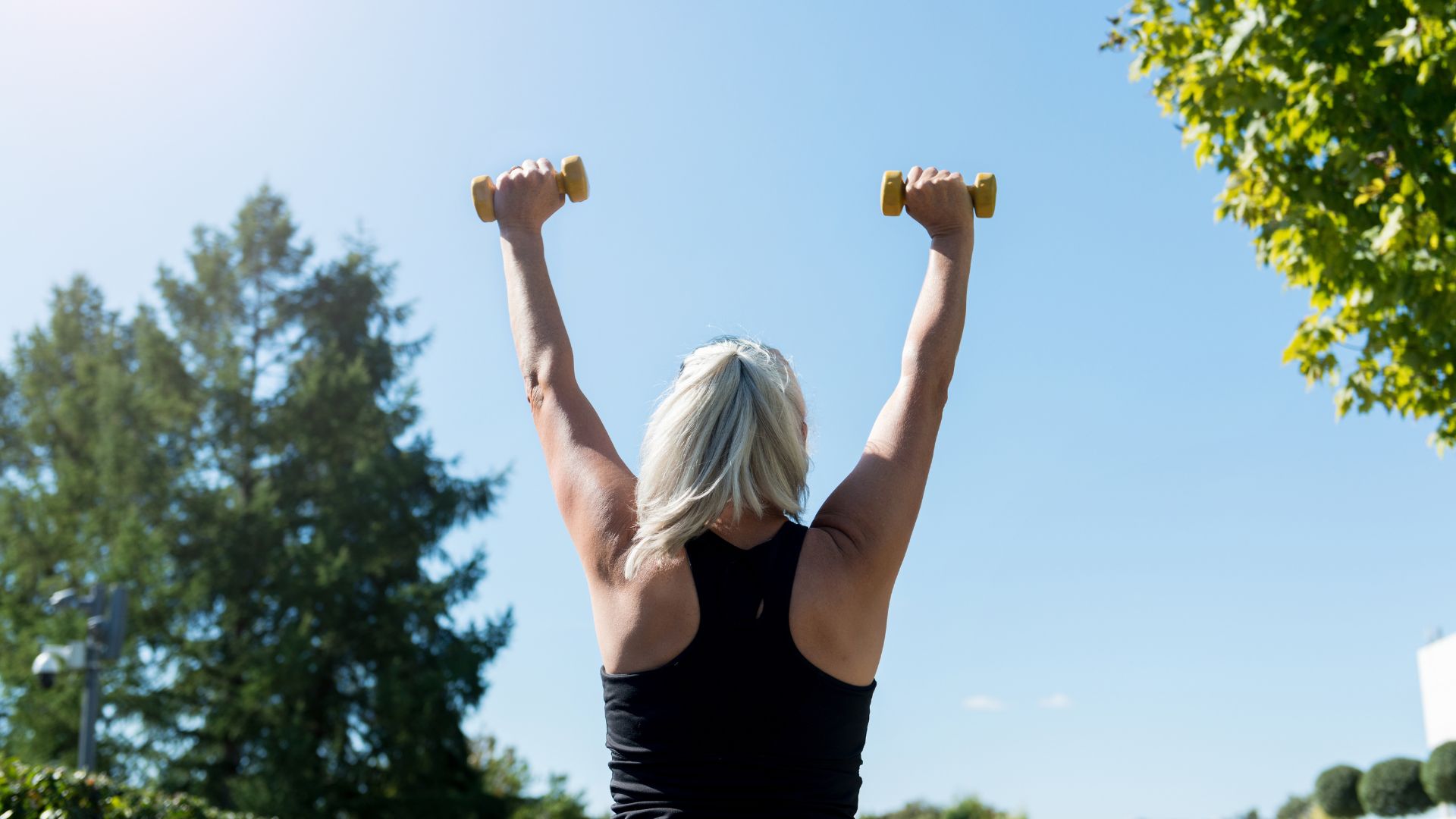Stop the guesswork - PTs reveal how much weight you should lift to get stronger and build muscle
If you're new to strength training, it's completely normal to ask 'how much weight should I lift?' in the gym or for at-home workouts


When I was new to strength training, I was nervous about lifting too heavy, fearing I wouldn't be able to complete the exercise and have to drop the weight - with much embarrassment, of course. I now know that it was holding me back from getting stronger, and it must have taken double the time to build half the muscle.
Lifting enough weight (but not too much) is essential in the gym, whether you're doing standing ab exercises or an upper-body dumbbell workout. It puts pressure on the muscles, breaking down the fibres, which grow and repair to be stronger.
To get the root of how much weight you should lift, I asked a couple of certified personal trainers, who've worked with thousands of clients, for their top tips.
How much weight should I lift?
It's best to start with a lighter weight and work up to heavier ones, the experts agree. For example, you could pick up a pair of 5kg dumbbells for a squat, holding them on your shoulders for support. If it feels too easy or hard, pick up a heavier or lighter weight for your set.
You'll know you're lifting the right weight to build strength when you're about "one to three reps before failure", says Abbie Watkins, a certified personal trainer and strength and conditioning specialist working with Origym. This means your weight should be heavy enough that your last repetitions are doable but certainly not easy.
The amount of weight you should lift can also depend on the exercise you're doing and the muscle you're targeting. "Larger muscles like the legs and glutes can handle more weight, while smaller ones like the shoulders and arms benefit from a gentler start," says Mapule Tagumigwa, a certified personal trainer with Hooke Fitness.
"Compound exercises like squats, deadlifts, and bench press use multiple muscles and can handle heavier loads, whereas isolation exercises like curls or lateral raises tend to need lighter weights for maximum control and form," adds Abbie.
Sign up to our free daily email for the latest royal and entertainment news, interesting opinion, expert advice on styling and beauty trends, and no-nonsense guides to the health and wellness questions you want answered.
For example, you could try:
- For compound lifts, lower body: 2 x 8-10kg dumbbells
- For compound lifts, upper body: 2 x 3-5kg dumbbells
- For isometric exercises, lower body: 2 x 5-7.5kg dumbbells, or use a machine
- For isometric exercises, upper body: 2 x 1-3kg dumbbells, or use a machine
How many repetitions should I do?
To build strength, aim for four to six repetitions with heavier weights, stopping one to three repetitions before failure. "This challenges the muscles to adapt to high loads without hindering form or recovery," says Abbie.
"This range can also work well for a balance between strength and muscle growth," she says.
If your focus is on building muscle, six to 12 repetitions is ideal, but studies have also shown five to 20 reps can be effective, as long as you do each set as close to 'failure' as possible.
How heavy should a beginner lift?
Those doing strength training for beginners may need lighter weights to focus on technique and help prevent injury, says Abbie, so it's a good idea to try out a few before picking the dumbbells for your exercise. For example, set a baseline of 5kg weights for upper and lower-body exercises. If it feels too easy, increase the weight. If it feels hard, use lighter ones.
"Tracking your progress, weights, reps, and sets is a game-changer, too. At first, it may feel like admin, but it quickly becomes motivating as you notice improvements you might not see in the mirror," says Mapule.
"While form should always come first, it doesn’t mean you’re limited to lifting lightly forever," she says.
Should I increase weight or reps?
If you can complete all your repetitions without issue, it's time to make a change by either increasing the weight or doing more repetitions until failure. Doing either will be fine most of the time, but if you do compound exercises (like walking lunges, deadlifts, and chest presses), then it's a better idea to increase the weight than more repetitions.
"For maximum effectiveness, reps to failure should be used strategically on isolation exercises like bicep curls or leg extensions," says Abbie. "Overusing failure on heavy compound lifts [like squats or deadlifts] can increase injury risk and impede recovery."

Grace Walsh is woman&home's Health Channel Editor, working across the areas of fitness, nutrition, sleep, mental health, relationships, and sex. She is also a qualified fitness instructor. In 2025, she will be taking on her third marathon in Brighton, completing her first ultra marathon, and qualifying as a certified personal trainer and nutrition coach.
A digital journalist with over seven years experience as a writer and editor for UK publications, Grace has covered (almost) everything in the world of health and wellbeing with bylines in Cosmopolitan, Red, The i Paper, GoodtoKnow, and more.
You must confirm your public display name before commenting
Please logout and then login again, you will then be prompted to enter your display name.